Potřebujeme váš souhlas k využití jednotlivých dat, aby se vám mimo jiné mohly ukazovat informace týkající se vašich zájmů. Souhlas udělíte kliknutím na tlačítko „OK“.
ASTM F2752-09(2014)
Standard Guide for Training for Level I Rope Rescue (R1) Rescuer Endorsement
Automaticky přeložený název:
Standardní Guide pro školení pro I Rope Level záchranného (R1) záchranář Schválení
NORMA vydána dne 1.3.2014
Informace o normě:
Označení normy: ASTM F2752-09(2014)
Poznámka: NEPLATNÁ
Datum vydání normy: 1.3.2014
Kód zboží: NS-54477
Počet stran: 4
Přibližná hmotnost: 12 g (0.03 liber)
Země: Americká technická norma
Kategorie: Technické normy ASTM
Kategorie - podobné normy:
Anotace textu normy ASTM F2752-09(2014) :
Keywords:
Extrication, Rescue, Rope, SAR, Technical Rescue, USAR, ICS Number Code 13.200 (Accident and disaster control)
Doplňující informace
| Significance and Use | ||||||||||||||
|
4.1 This guide establishes a minimum standard for training Rope Rescuers as it relates to their general, field, and rope rescue specific knowledge and skills. A person trained to this guide is an endorsed Level I Rope Rescuer (LRT-R1 Rescuer). 4.1.1 Every person who is identified as an endorsed LRT-R1 Rescuer shall have met the requirements of this guide. 4.1.2 This guide is only the first level of training for rope rescue personnel and, in conjunction with Guide F2209, only establishes the minimum knowledge and skills required for a person to perform basic rope rescue of a subject. No other advanced skills are included or implied. 4.1.3 In addition to meeting the requirements of this guide, an LRT-R1 Rescuer shall also be adequately trained in the environment in which he is expected to work (i.e., wilderness, urban, etc.) 4.1.4 Nothing in this guide precludes an AHJ from adding additional requirements for its own members. 4.2 Endorsement to Level I Rope Rescue (LRT-R1 Rescuer) is not an indication that personnel possess adequate field skills or knowledge to make mission-critical decisions. These personnel are qualified to work primarily in terrain with limited exposure and hazard potential. 4.3 This guide by itself is not a complete training document. It is only an outline of the topics required for training or evaluating an endorsed LRT-R1 Rescuer. It may, however, be used in the development of, or as part of, a complete training document or program. 4.3.1 This guide does not stand alone and must be used with the referenced documents to provide the specific information needed by an endorsed LRT-R1 Rescuer or AHJ. 4.4 Though this guide establishes only minimum standards, it does not imply that an endorsed LRT-R1 Rescuer is a “trainee,” “probationary,” or other similar term member of an AHJ. It is up to the AHJ to determine the requirements and qualifications for member ratings. 4.5 Because technical rope rescue is inherently dangerous and Rope Rescuers are frequently required to perform rigorous activities in adverse conditions, regional, and national safety standards shall be included in agency policies and procedures. Rope Rescuers shall complete all activities in the safest possible manner and shall follow national, federal, state, provincial, and local safety standards as they apply to the Rope Rescuer. 4.6 This guide can be used to evaluate a document to determine if its content meets the necessary topics for training an endorsed LRT-R1 Rescuer. Likewise, the guide can be used to evaluate an existing training program to see if it meets the requirements of this guide. 4.7 The knowledge and skills requirements in the following sections are not presented in any particular order and do not represent a training sequence. 4.8 Except where a physical skill needs to be shown, it is up to the AHJ to determine the best way to evaluate a person's knowledge. This may be by written exam, oral exam, demonstration, or by some combination of the three. |
||||||||||||||
| 1. Scope | ||||||||||||||
|
1.1 This guide is intended to be used in conjunction with, and as an add-on to, Guide F2751 (or equivalent for other environments), to address specific skills required for a rescuer who participates in rope rescue as part of a larger rescue duty. 1.1.1 Specifically, a Rope Rescue Endorsement is intended to provide guidance whereby an endorsed rescuer (under qualified supervision) may assist and support basic rope rescue functions, including patient packaging, litter rigging, and basic rope rigging functions, in conjunction with other rescue duties. 1.1.2 This guide establishes the minimum training standard for an endorsed Level I Rope Rescuer as related to general, field, and rope rescue-specific knowledge and skills. 1.1.3 Endorsed Level I Rope Rescuers (LRT-R1) must work under direct supervision of qualified rope rescue personnel. 1.2 An endorsed LRT-R1 Rescuer rescues on the surface of the land only. This guide alone does not provide the minimum training requirements for rescuing in partially or fully collapsed structures, in or on water, in confined spaces, or underground (such as caves, mines, and tunnels). 1.3 An endorsed LRT-R1 Rescuer is required to have knowledge and skill sets pertaining to the basic roped evacuation and carryout components of rope rescue. Only basic knots, rigging, and other patient transport skills are required of an endorsed LRT-R1 Rescuer. 1.4 Type II teams which may utilize personnel trained to this guide are Kind A (wilderness), Kind B (urban), and Kind C (mountainous). 1.4.1 Further training may be required before an endorsed LRT-R1 Rescuer can actually participate on a particular kind of rope rescue team, depending on authority having jurisdiction regulations or policies. 1.5 This standard does not purport to address all of the safety concerns, if any, associated with its use. It is the responsibility of the user of this standard to establish appropriate safety and health practices and determine the applicability of regulatory requirements prior to use. |
||||||||||||||
| 2. Referenced Documents | ||||||||||||||
|
Podobné normy:
Historická
15.12.2011
Historická
1.7.2011
Historická
1.7.2011
Historická
1.2.2012
Historická
15.11.2013
Historická
1.10.2013
Doporučujeme:
Aktualizace technických norem
Chcete mít jistotu, že používáte pouze platné technické normy?
Nabízíme Vám řešení, které Vám zajistí měsíční přehled o aktuálnosti norem, které používáte.
Chcete vědět více informací? Podívejte se na tuto stránku.


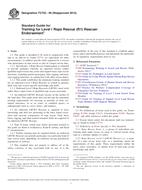
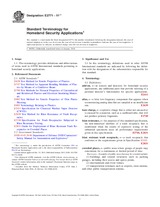 ASTM E2771-11e1
ASTM E2771-11e1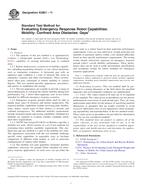 ASTM E2801-11
ASTM E2801-11 ASTM E2802-11
ASTM E2802-11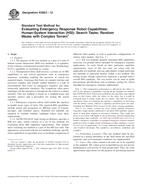 ASTM E2853-12
ASTM E2853-12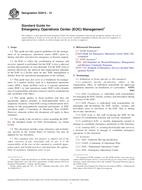 ASTM E2915-13
ASTM E2915-13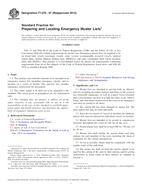 ASTM F1270-97(2013)..
ASTM F1270-97(2013)..
 Cookies
Cookies
